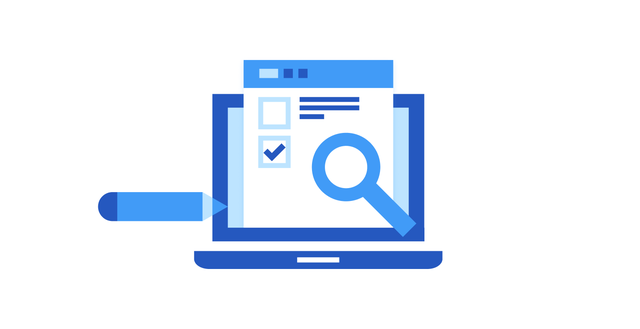Choosing a User Research Method: Development and Pre-Launch Phase
The importance of user research throughout the product development cycle can’t be underestimated.
- Article
- 3 MIN READ
- Sep 9, 2020
-
 Apply Digital
Apply DigitalStaff

Summary
The importance of user research throughout the product development cycle can’t be underestimated. At Apply Digital, we break down this cycle into four phases:
Discovery
Definition & Prototyping
Development & Pre-Launch
Launch & Growth
This article is the third in a series of four articles and will focus on the user research methods required to support the Development and Pre-Launch Phase of a project. The first article written by Rabiya Samji and focusing on the Discovery phase can be accessed here, while the second article by Stephen Katz covering the Definition & Prototyping phase can be found here.
User research in development & pre-launch phase
True to its name, this phase focuses on building an effective, impactful product and preparing it to launch into the marketplace. At this stage, the UX team works closely with the engineering and marketing teams. The focus is now on making sure that the product meets the needs of the end-user, and is also ready to be launched with an effective marketing plan.
Like other stages in development, user research is key during the Development & Pre-Launch stage. By watching the end-user interacting with the beta version of a product, we can garner real-time feedback. This can be refined and communicated to the engineering team so that feature fixes and other bugs are properly logged and addressed. We also prioritize accessibility in all of our products, and so at this phase, we pay close attention to how well the product might serve the differently-abled.
On the marketing front, this phase observes beta testers with a lens on learning more about the buying behavior, decision drivers, and media consumption habits of our audience. These insights inform our approach to marketing call-to-actions, acquisition strategy, and product promotions channels.
Common research approaches employed in this phase are:
Beta Testing
Accessibility Testing
Discoverability Research
1. Beta testing
Our engineering and beta testing teams work side by side as we complete the final development of a project. Beta testing conducted during this time is our best chance to find bugs and usability issues before a product is fully released into the market. While internal testing can uncover many problems, nothing can truly simulate real users trying to complete real tasks. Beta testing is also sometimes referred to as user acceptance testing (UAT) or end-user testing.
Since beta testing is done by real users conducting tests in their own environments, and on their own hardware, networks, connection, etc. this is the first chance for us to test the security and reliability of our product.
Beta tests can either be open or closed. In an open beta test, anyone is able to use the product but users are required to submit feedback via a pre-established system. In a closed beta, the testing is limited to a specific set of testers, who may be composed of current customers, early adopters, and/or paid beta testers.
These early user experiences are reported back to the developers, so they can make all necessary changes prior to the product’s launch.
2. Accessibility testing
Apply Digital is dedicated to building digital products that are accessible to people of all abilities. We adhere to the Web Content Accessibility Guidelines (WCAG) and consider these the gold standard in this domain.
We conduct accessibility user testing in order to ensure that individuals who are differently-abled are not excluded from using products because of their disabilities. For example, how will a webpage work when someone is accessing it via screen reader technology? We ask individuals living with disabilities to let us know how well our digital products are working for them, and then take careful note of how we might approve prior to launching these tools into the market.
There are four main types of accessibility testing:
Automated testing
Manual code review
UX review
User testing
These tests help us look for things like:
Navigational issues that might arise due to unique accessibility needs
Potential barriers to access and information consumption
Effectiveness of overall design with voice over technology
3. Discoverability research
While the design and technology of a product play a big role in a product’s success, the importance of product discoverability can’t be understated either. If we build a product but we don’t know what channels customers use to find new products, then it is unlikely that our product will be successful.
Discoverability Research tackles this issue. Such research is often done in conjunction with the marketing team and focuses on understanding consumer behavior. Our goal is to learn:
What drives the buying decision for our users
What media channels they use
What are their content preferences
What is their propensity to pay for the product and if they want a free, freemium, or paid product
Successful discoverability research informs:
Channel and acquisition strategy: We know how to get the users we want and what will push them to download/ use our product
Pricing/monetization strategy: We learn about how much our users are willing to pay for the services our product offers
Content strategy: We understand what content our users will like to engage with
Conclusion
Research during Development & Pre-Launch is an opportunity to uncover any missed usability issues. We want to gather as much feedback about the experience so the developers have a chance to incorporate that feedback before launching. This includes making sure the product meets accessibility guidelines and is able to provide the same great experience for users with disabilities as well. It is critical for us to provide an immersive experience for every user.
These approaches to UX research aren’t the only ones we use at Apply during the Development and Pre-launch stage, but they are the ones that we most commonly use. Our approach depends on the need of the product and the client.
Somos tu partner
Juntos, podemos entregar soluciones innovadoras y potenciarte en tu viaje hacia la transformación digital.
Sigue aprendiendo

Choosing a User Research Method: Launch & Growth Phase

